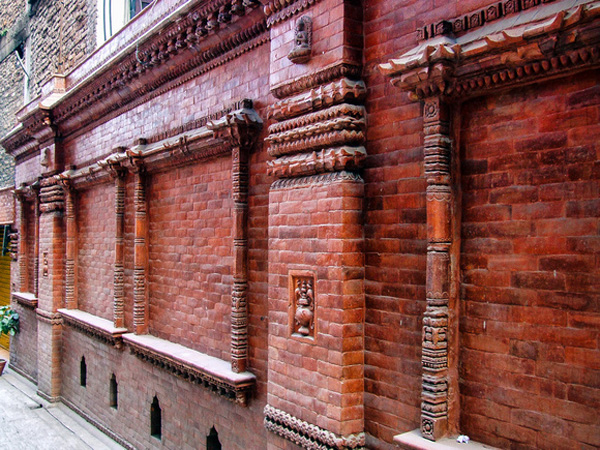
A highlight of my trip to Nepal has been the traditional Newari brick. Beautiful examples of this architectural terra cotta clay brick abound in Kathmandu. Terra cotta brick and tiles are very affordable because they’re made with low fired clay.
It occurred to me that these bricks and tiles could easily be incorporated into earthbag buildings, CEB buildings and other types of buildings. This fits in with my goal of spreading sustainable building in Nepal. An earthbag building, for example, with traditional brick and tile trim would be popular with Nepalis. A few different brick designs combined can greatly enhance the appearance. The terra cotta bricks and tiles could be added around doors, windows, as base trim, etc. One option is to embed the bricks between courses of bags. Temporary wood boards could be placed between courses to create a squared recess for the bricks. Remove the boards when the wall is complete and mortar the bricks into place. The same process of using local decorative brick could be used in other countries to create many interesting designs.
Image source: The Longest Way Home

Where are these ornamental bricks produced, where can one buy them?
It appears that the best place to find them is in Nepal.
Plissir so me a 2 side in brick pitchor
Sorry… I don’t have any other pictures.
An even easier way to use terra cotta bricks is to use thin facing brick. They could be mortared onto the plastered wall and then the final coat of plaster added. This would be much faster, easier and less expensive than the method described above.
Thamel is the popular tourist area of town with lots of small shops and good restaurants. The area has lots of brickwork like in the photo. Click the link to The Longest Way Home blog if you want to learn how the area was rebuilt. Of most interest to me is how a few different brick designs can be combined to create really beautiful buildings.